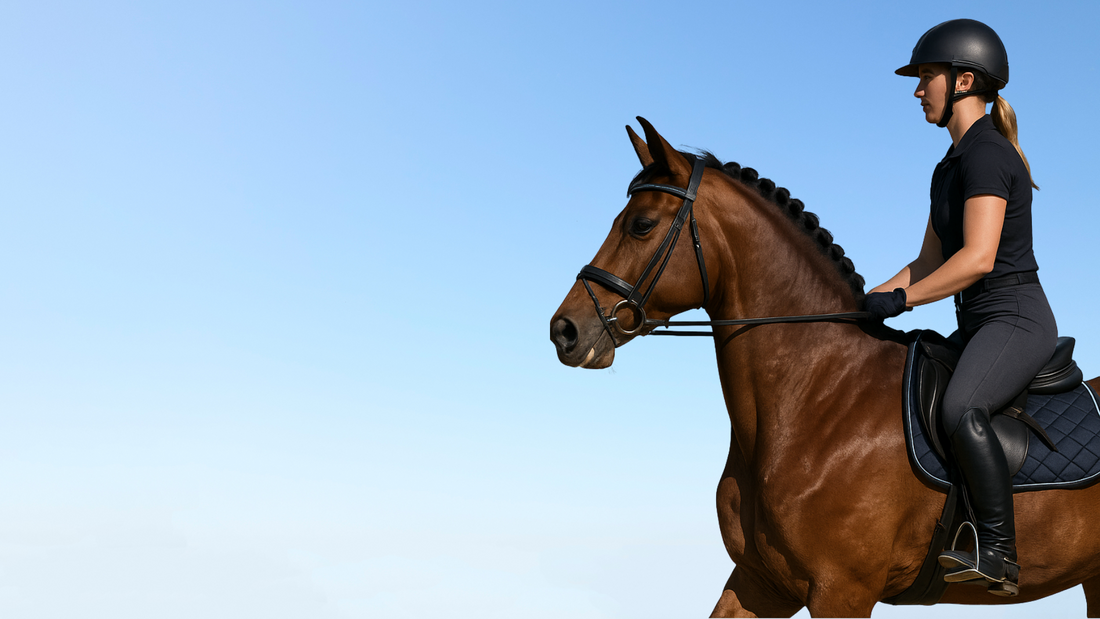
Unlocking the Science Behind Every Stride: How Biomechanics is Transforming Equestrian Sport
Share
For centuries, equestrian sport has been steeped in tradition, relying on rider experience, intuition, and observation passed down through generations. Yet as competition standards soar and equine welfare becomes a global priority, a quiet revolution is underway. Riders, trainers, and veterinarians are increasingly turning to biomechanics, the scientific study of movement, to enhance performance, reduce injury risk, and improve the well-being of horses worldwide.
What is Biomechanics and Why Does It Matter?
Biomechanics examines how muscles, bones, tendons, and joints work together to produce movement. In horses, this means analysing aspects like:
- Stride length and symmetry
- Joint angles at walk, trot, and canter
- Muscle engagement and compensations
- Mobility of the back and pelvis
- Balance and straightness of movement
By understanding these mechanics at a detailed level, riders and professionals can uncover subtle movement patterns invisible to the naked eye but critical to performance and health. For instance, a 2020 study published in Frontiers in Veterinary Science showed that biomechanical analysis can detect lameness earlier than traditional clinical exams, allowing timely intervention before issues worsen.
The Horse-Rider System: An Interconnected Biomechanical Dance
Biomechanics doesn't just study the horse — it examines the horse and rider as one system. Rider posture, balance, core strength, rein tension, and leg pressure all affect how a horse moves. Research from the Journal of Sports Sciences demonstrates that poor rider alignment can lead to uneven weight distribution, increasing strain and injury risk for the horse.
Tools and Technologies Shaping Modern Equestrianism
Globally, high-performance stables and equestrian centres are integrating cutting-edge tools to refine biomechanics, including:
- High-speed video gait analysis to capture subtle motion details
- Saddle pressure mapping systems that optimise fit and comfort
- Inertial Measurement Units (IMUs) for real-time 3D movement tracking
- Force plates and rein tension sensors to quantify mechanical forces
- Smartphone apps are making basic gait analysis accessible to more riders
These technologies, once reserved for elite athletes, are increasingly accessible worldwide, including in South Africa, bridging traditional horsemanship with modern science.
Why Every Rider Should Consider Biomechanics
Whether you're a competitive rider or a passionate amateur, biomechanics offers practical benefits:
- Improved athletic performance through more efficient, natural movement
- Early injury detection before visible signs appear
- Customised saddle fitting that respects your horse’s back and motion
- Enhanced rider balance and harmony for better communication
- Tailored training programs aligned with your horse’s unique biomechanics
Getting Started with Biomechanics
You don’t need expensive equipment to begin. Simple steps include:
- Recording your rides on video and reviewing them in slow motion
- Consulting with certified coaches or equine physiotherapists skilled in biomechanics
- Exploring saddle fit assessments and, when possible, trying pressure mapping
- Using beginner-friendly gait analysis apps for initial insights
Frequently Asked Questions About Equestrian Biomechanics
Q: How can I tell if my horse needs a biomechanical assessment?
A: Signs like subtle unevenness in gait, resistance during work, or recurring minor injuries can indicate biomechanical issues. Even if your horse looks sound, periodic assessments help catch hidden problems early.
Q: Do I need special equipment to analyse biomechanics?
A: Not necessarily. Video recordings from a smartphone and feedback from experienced trainers or equine physiotherapists are great starting points. Advanced tools like pressure mats or IMUs provide deeper insights, but aren’t essential for beginners.
Q: How often should a biomechanical assessment be done?
A: Ideally, at key points in your horse’s training or career, for example, when starting a new discipline, returning from injury, or annually as part of preventative care.
Q: Will focusing on biomechanics improve my riding?
A: Yes! Better understanding your own posture and movement helps you communicate more effectively with your horse, promoting harmony and reducing strain for both of you.
Biomechanics and Equine Welfare: An Ethical Imperative
Beyond competition, biomechanics is a crucial tool for ethical horsemanship. Understanding and respecting your horse’s natural movement reduces strain and promotes long-term health, ensuring your horse enjoys a happy, active life. The World Horse Welfare organisation emphasises the role of science in improving equine care and training standards worldwide.
Biomechanics bridges intuition and science, enriching equestrian tradition with evidence-based insights. As research advances and technology becomes more accessible, biomechanics will shape a future where horses and riders perform at their best — safely, ethically, and sustainably.
Recommended Resources to Learn More About Biomechanics
-
Equine Biomechanics Course by the International Society of Equitation Science (ISES):
https://equitationscience.com/education/
A comprehensive introduction to biomechanics and ethical horsemanship. -
Frontiers in Veterinary Science – Research on Equine Biomechanics:
https://www.frontiersin.org/journals/veterinary-science
Access to up-to-date scientific studies on equine movement and welfare. -
Saddle Pressure Mapping Explained (Video):
Search YouTube for “Saddle Pressure Mapping Explained” for beginner-friendly videos demonstrating how saddle fit impacts horse comfort. - Apps for Gait Analysis:
- EquiMoves (iOS & Android)
-
Stride Pro (iOS)
These apps help riders record and analyse horse movement on the go.
Consult Local Experts:
Look for certified equine physiotherapists, biomechanics coaches, or saddle fitters in your region who offer assessments and personalised advice.
